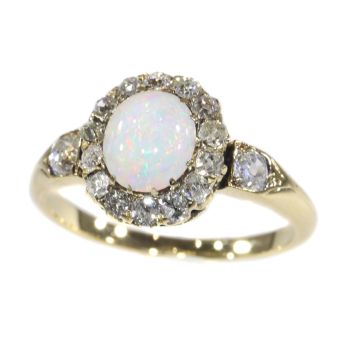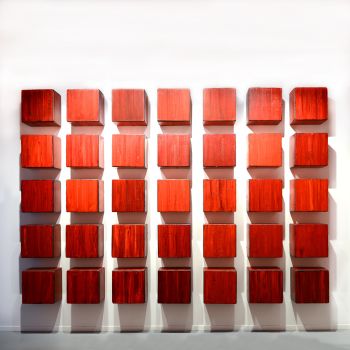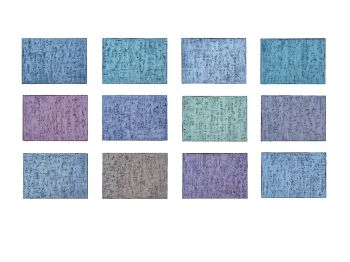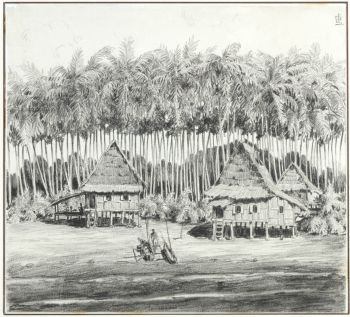An Indian part-gilt silver-clad ceremonial sceptre or mace with a tiger’s head 1850 - 1900
Artiste Inconnu
BoisVerreArgent
82 cm
Prix sur demande
Zebregs & Röell - Fine Art - Antiques
- Sur l'oeuvre d'art
An Indian part-gilt silver-clad ceremonial sceptre or mace with a tiger’s head Northern India or Deccan, late 19th century L. approx. 82 cm (excl. stand) Provenance: Private collection, United Kingdom This remarkable gilt-silver soonta (ceremonial sceptre) also known as choba (ceremonial mace) with a tiger's head stands out as an unparalleled example. It has a wooden base, clad with thick sheet part-gilt silver and has fine details such as teeth and a curling tongue. Especially with the inlaid glass eyes, in combination with the grand sculptural design, it would have been integral to an Indian maharaja’s attire, known as lawajama in North India and biruthus in South India, as referenced by Jackson & Jaffer. They would symbolise authority, power, and sometimes an attribute of various deities, particularly those associated with strength or combat. For instance, the Hindu god Hanuman, known for his immense strength, is often depicted holding a mace (*chob* or gada in Sanskrit). Similarly, the god Vishnu and his avatar Krishna are also frequently depicted with a mace among their other attributes. Courtiers would raise these sceptres wrapped in rich brocades, with the head visible, during processions, signalling their association with the monarch. Alongside fly-whisks and standards, they were indispensable in ceremonial parades, underscoring the ruler's prestige. Terlinden notes that a soonta berdar was tasked with carrying the sceptre. These individuals, proficient in courtly manners, played key roles during audiences, from managing entrances to introducing guests. Their esteemed position often earned them generous rewards, including land grants. See for a depiction of sceptres in use the top right of a painting in the collection of the V&A, titled Processional scene with Amar Singh, ruler of Thanjavur (Tanjore), and Sarabhoji, from circa 1797 (access.no. IM.10-1938) For a very comparable piece, but with an elephant’s head, see the collection of the Indian Museum, Kolkata (access.no. R.10208/S.4596). For other less similar examples, see the V&A Museum London (access.no. 889-1874 & IM.49-1928). Sources: A. Jackson & A. Jaffer, Maharaja: The Splendour of India’s Royal Courts, London, V&A Publishing, 1999 Christiane Terlinden Serra, Mughal Silver Magnificence: 16th-19th century, Brussels, 1987, p. 64
- Sur l'artiste
Il peut arriver qu'un artiste ou un créateur soit inconnu.
Certaines œuvres ne doivent pas être déterminées par qui elles sont faites ou elles sont faites par (un groupe d') artisans. Les exemples sont des statues de l'Antiquité, des meubles, des miroirs ou des signatures qui ne sont pas claires ou lisibles, mais aussi certaines œuvres ne sont pas signées du tout.
Vous pouvez également trouver la description suivante :
•"Attribué à …." A leur avis probablement une oeuvre de l'artiste, au moins en partie
•« Atelier de …. ou « Atelier de » À leur avis, une œuvre exécutée dans l'atelier ou l'atelier de l'artiste, éventuellement sous sa direction
•« Cercle de… ». A leur avis une oeuvre de la période de l'artiste témoignant de son influence, étroitement associée à l'artiste mais pas forcément son élève
•« Style de … ». ou "Suiveur de ...." Selon eux, une œuvre exécutée dans le style de l'artiste mais pas nécessairement par un élève ; peut être contemporain ou presque contemporain
•« Manière de… ». A leur avis une oeuvre dans le style de l'artiste mais d'une date plus tardive
•"Après …." A leur avis une copie (quelle qu'en soit la date) d'une oeuvre de l'artiste
•« Signé… », « Daté… ». ou « Inscrit » À leur avis, l'œuvre a été signée/datée/inscrite par l'artiste. L'ajout d'un point d'interrogation indique un élément de doute
• "Avec signature ….", "Avec date ….", "Avec inscription …." ou "Porte signature/date/inscription" à leur avis la signature/date/inscription a été ajoutée par quelqu'un d'autre que l'artiste
Êtes-vous intéressé par l'achat de cette oeuvre?
Artwork details
Related artworks
- 1 - 4 / 12
Rene Rietmeyer
"USA South Florida January 2006"2006
Preis auf AnfrageEuropean Cultural Centre Collection
Unbekannter Künstler
UITGEBREIDE FEESTDAGENIKOON MET PASSIECYCLUS19th century
Preis auf AnfrageHeutink Ikonen
Unbekannter Künstler
Monumentale Holzikone: Der heilige Nikolaus von Mozaisk1600 - 1650
Preis auf AnfrageKunsthandel H.W.C. Dullaert Icons
1 - 4 / 24- 1 - 4 / 4
- 1 - 4 / 24
Unbekannter Künstler
A Kayapo Amazon Indigenous feather headdress1950 - 1960
Preis auf AnfrageZebregs & Röell - Fine Art - Antiques
Engelbert Kaempfer
ENGELBERT KAEMPFER BOOK1651 - 1716
Preis auf AnfrageZebregs & Röell - Fine Art - Antiques
Unbekannter Künstler
The Stamford Raffles Secretaires.1800 - 1813
Preis auf AnfrageZebregs & Röell - Fine Art - Antiques
1 - 4 / 12












































































